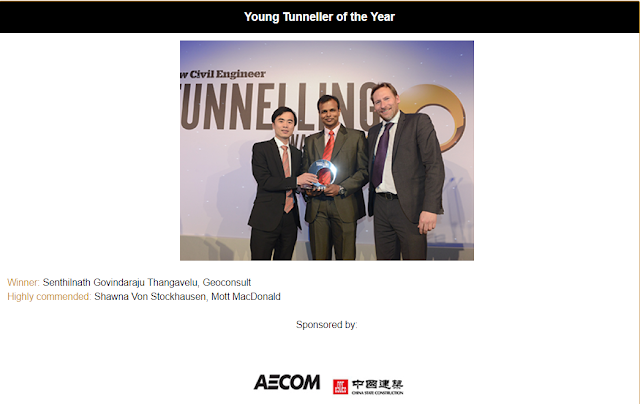The book describes the tragedy which occurred during construction of a waste treatment plant in Boston Harbor, USA. As with the most sewage outfall tunnels, this project has diffuser lines installed towards the end of the tunnel to disperse the treated sewage. The book describes about an incident where divers were sent into ~15km long un-ventilated tunnel (with individual breathing system) to remove the safety plugs installed at the tunnel and diffuser connections.
The author describes the the dangers faced by the workers due to the inability of the tunnel designers, constructors, and management who could have worked together to solve the issue. Rather they tried to insulate themselves from liabilities and to push the risks on to the other parties which made their relationship thoroughly dysfunctional. At the end, the dangerous cocktail of time, money, stubbornness and frustration (near the end of over budget , long delayed project) has caused the lives of workers.
 |
| Deer Island Treatment Plant and Sewage Outfall tunnels (source) |
Having a bit of experience myself in working for mines, tunnels and claustrophobic hyperbaric chambers, I have some idea of the "adventure" and risk that the job entitles to the people working in such conditions on a daily basis. Even then, I found the book baffling and I found it hard to digest the fact that these divers were exposed to such extreme risks.
 |
Entering a hyperbaric chamber |
But this seem to be the reality of lump-sum low bid construction. The company bids the bare minimum and can make profit only when the cost turn out to be unusually low. In order to do so, the company weighs in too much on the responsibility that it assigns to a third party and the farther the managers are from the actual decision making, the greater is their tolerance for risk. In such an arrangement, as the problem arrives, the priority is not on solving them but to figure out who's is to blame and who is going to pay. Hence the problem gets a lot harder and more expensive to fix. Once relationship gets poisoned, the parties become so fixed in their position that they could no longer trust the intention of the other side.
I got to learn very good lessons for my professional as well as personal life based on the narrative presented in the book. I could immediately relate to some of my projects where opposing sides become fixed in their positions, relying on cognitive shortcuts as they are locked in adversarial contest. Some of my take away points are:
If there is any incident, it is usually caused by a series of small bad decisions made by many individuals, none of which on its own would have been enough to produce a failure.The author draws the comparison with "Swiss cheese" model of failure which is often used by safety scientists. When the holes in organizational defects line up in ways that had not been foreseen, the problem require rapid interpretation and responses and here it is when that things can go wrong.
- Accidents do happen when confidence runs high and tolerance for delay dips low. This should not let people accept looser standards in the name of greater speed. The more people do something without suffering bad outcome, the harder it could become to remain aware of the risks associated with that behavior.
- Engineer should have a good sense and strong stomach to say no whenever he/she ethically believes so. An engineer has to plan to follow proven protocols rather than panic gut decisions.
Overall, a very interesting story documenting the heroism of the workers and mis-management of design and contract administration.








